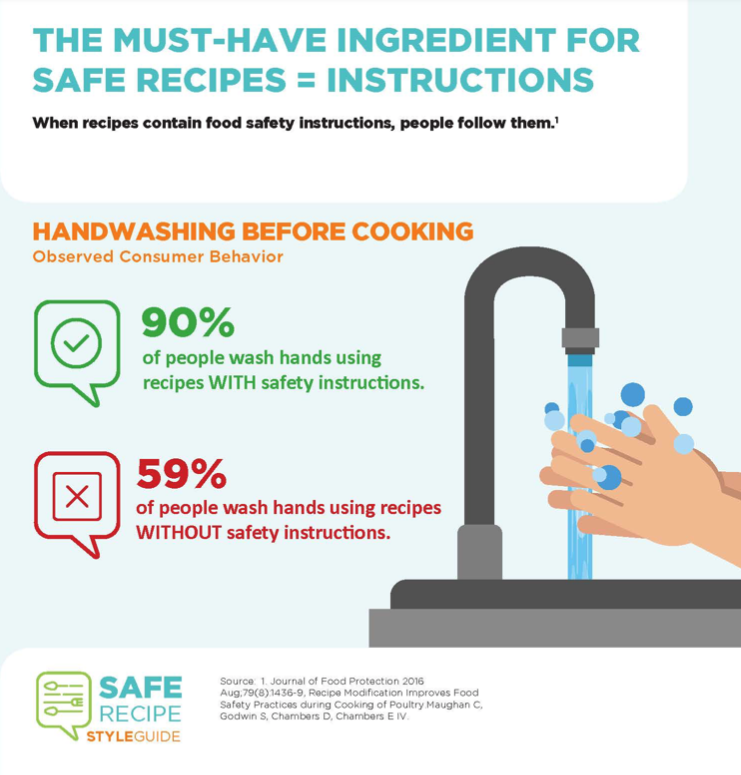It is great to teach cooking classes, hold demos and inspire home cooks to purchase cookware, gadgets and other fun kitchen tools, but as anyone who has worked in a serious restaurant kitchen knows, food safety is the first priority.
Professionals in the food service industry learn how to best make food safe for their patrons, but how much of that gets through to consumers who take cooking classes in kitchenware stores? Or for that matter, food writers and bloggers? (Really, when was the last time you read an article in the local food section on the decidedly unglamorous topic of washing your hands?)
Now the Partnership for Food Safety Education wants to find a remedy. The PFSE has launched a new tool aimed at raising consumers’ food safety behaviors at home. Called the Safe Recipe Style Guide, it was first released at the 2019 Consumer Food Safety Education Conference in early March, where more than 400 public and private sector experts gathered to address how to improve food safety behaviors.

The Safe Recipe Style Guide is designed for use by any recipe writer, professional recipe developer or food journalist who writes and publishes recipes. The guide addresses the four major areas of most food safety violations in home kitchens: temperature, hand washing, cross contamination and produce handling. (Go to www.saferecipeguide.org for more.)
The Guide was inspired by a study in the Journal of Food Protection that showed “…significant improvement in home kitchens when recipes contain food safety instructions written into the text,” according to the study author Sandra Godwin, Ph.D, RD, from Tennessee State University.
“We were thrilled to observe that study participants who received recipes with food safety instructions demonstrated significantly improved food safety preparation behaviors compared to those who did not have instructions in the recipes,” she says. “This told us that the recipes themselves might be one of our best food safety tools.”

The goal was to come up with an Associated Press (AP) Stylebook for food writers. “This guide would provide easy ways to invigorate food safety instructions,” Godwin says. The manual was written with the help of food safety experts and guided by food journalists. It is intended as a supplement to the AP Stylebook, which is the standard on guidelines ranging from punctuation to spelling and journalistic style for newspapers and magazines.
“There is no time better than right now for this kind of recipe format update,” says Heather McPherson, food writer and past president of the Association of Food Journalists, who says she thinks the reaction from consumers will be positive. “Even if some don’t embrace it right away, when they continue to see the language in recipes it will eventually sink in.”
The PFSE plans a year-long roll-out of the Style Guide to educate the media and food industry about the new guidelines and the potential public health benefits.
“Consumers play a key role when it comes to preventing food borne illness and keeping their families safe and healthy,” says Mindy Brashers, Deputy Under Secretary for Food Safety at the USDA. “The research is clear. Consumers do not wash their hands at critical steps of food preparation, which can lead to cross-contamination of harmful bacteria. The more invocation that we can provide to help consumers, the better they able to prevent food-borne illness.”



